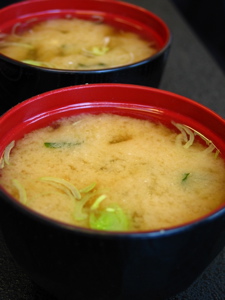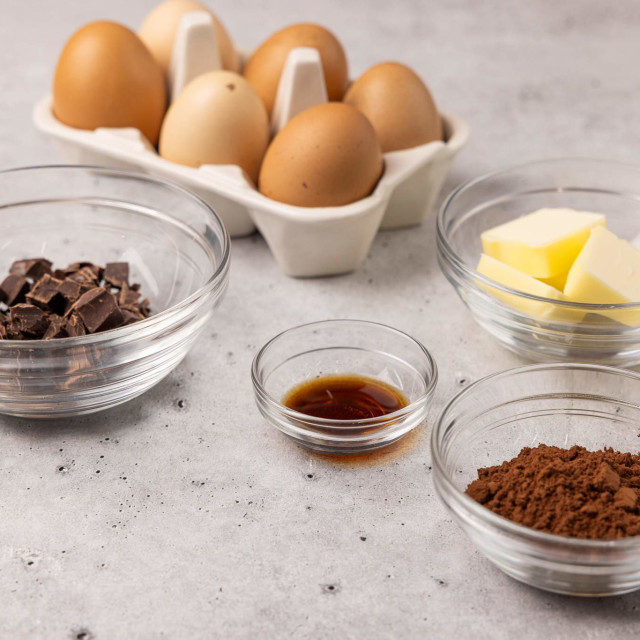Miso
 |
A staple of Japanese cuisine, miso soup is served with almost every meal, including breakfast.
|
Miso is perhaps best known for its role in miso soup, but it also adds rich flavor and creamy texture to noodles, salad dressings, sauces, marinades, rubs and pates.
Varieties
The lightest colored miso is known as Shiro. Often made from rice, it provides a sweet taste for delicate sauces, dressings and a variety of lighter foods. Shinshu is an all-purpose variety with a golden yellow color and mellow flavor.
Darker varieties, richer and more robust in taste, are used to
flavor hearty stews, grains, legumes, gravies or marinades. Regional
favorites include sendai, a fragrant reddish-brown variety found in northern Japan, and hatcho, a dark brown miso popular in central Japan.
Low-salt miso is also available as an alternative to varieties containing high concentrations of salt.
History
Miso's origins can be traced back to 3rd century BC China, where it was known as hiso. It was imported to Japan in the 6th century and became an important part of the samurai diet.
Buying Tips
Miso is most often sold in paste form, but is also available as a powder. It can be found at Japanese markets and natural food stores.Storage Tips
Refrigerate in an airtight container for up to one year.Usage Tips
• Add miso sparingly—it is highly concentrated.• Use it as a table condiment to season foods after cooking.
• To retain flavor and nutrients, be careful not to overcook or boil it.
• Mix one tablespoon of miso into a cup of hot water for a nutritious lunchtime broth.
• Use as a flavoring substitute for soy sauce (equal measures) or salt.
Nutrition Notes
Miso is easily digested and very nutritious, with rich amounts of B vitamins and protein.Try one of our favorite miso recipes:
Peanut Miso Dressing and Dipping Sauce
Breakfast Miso Soup
Broiled Hawaiian Swordfish in Miso





